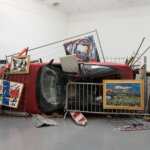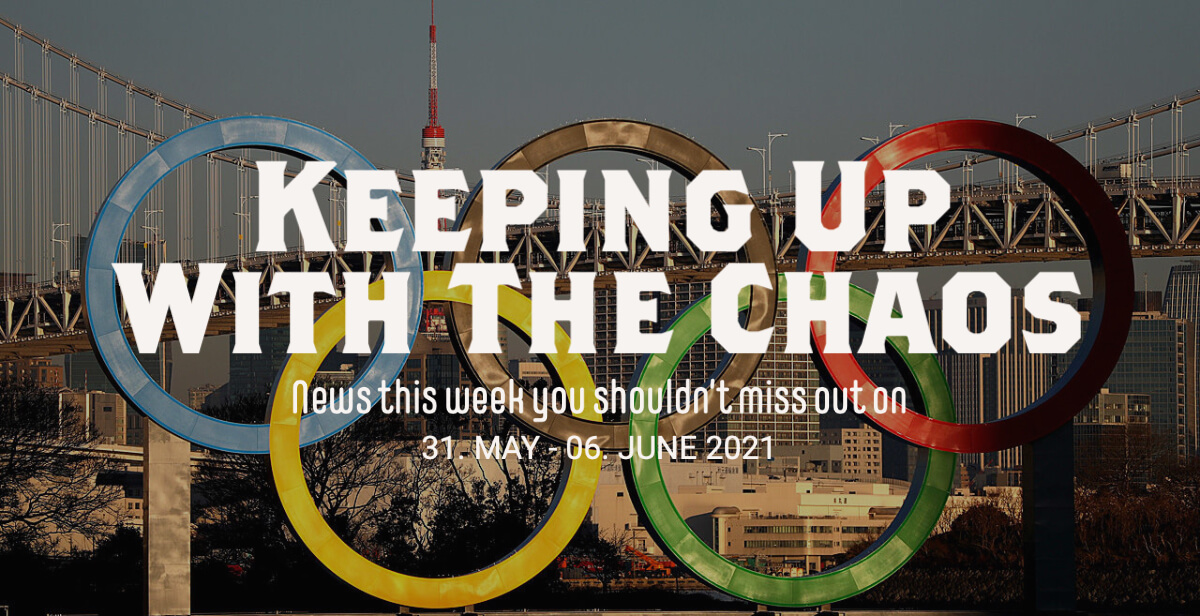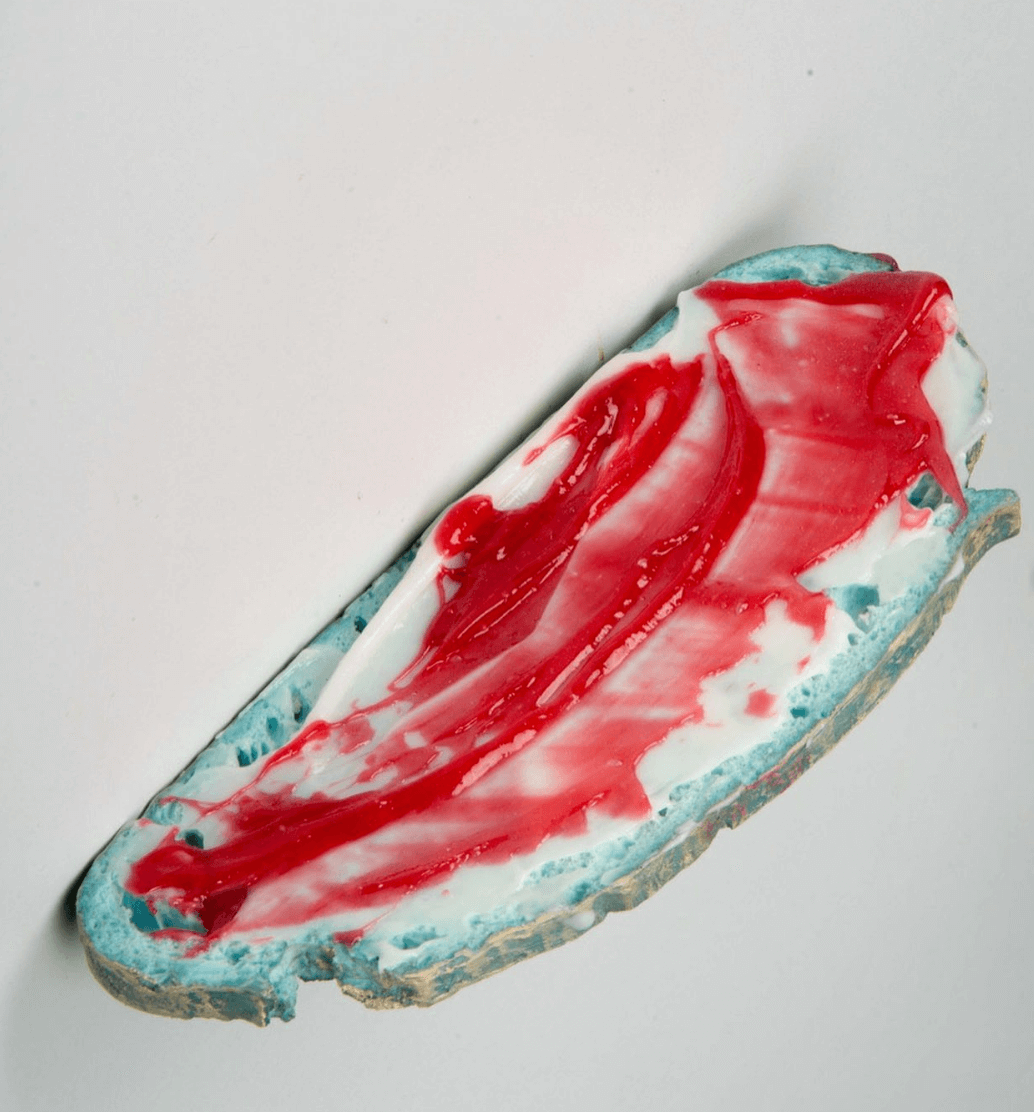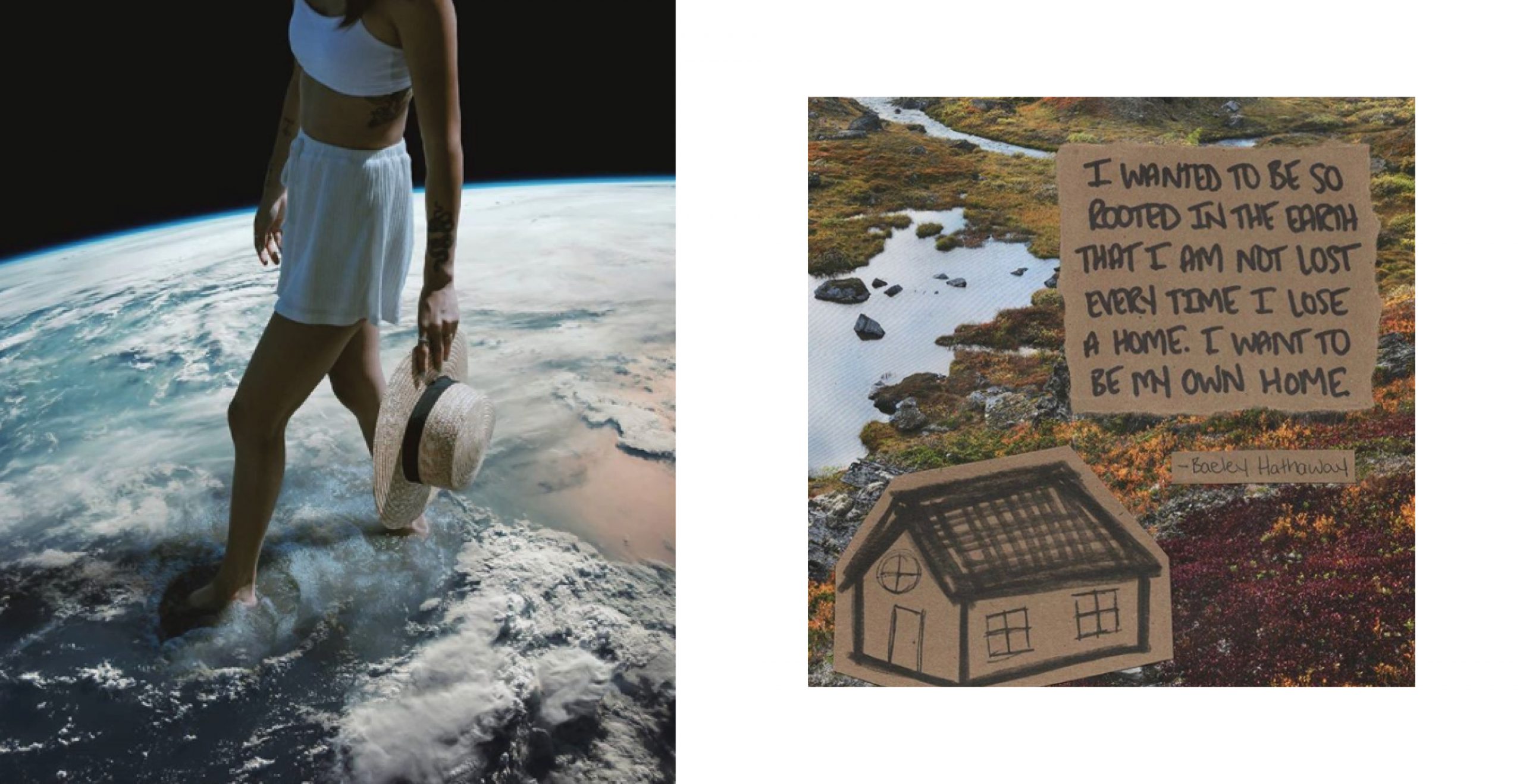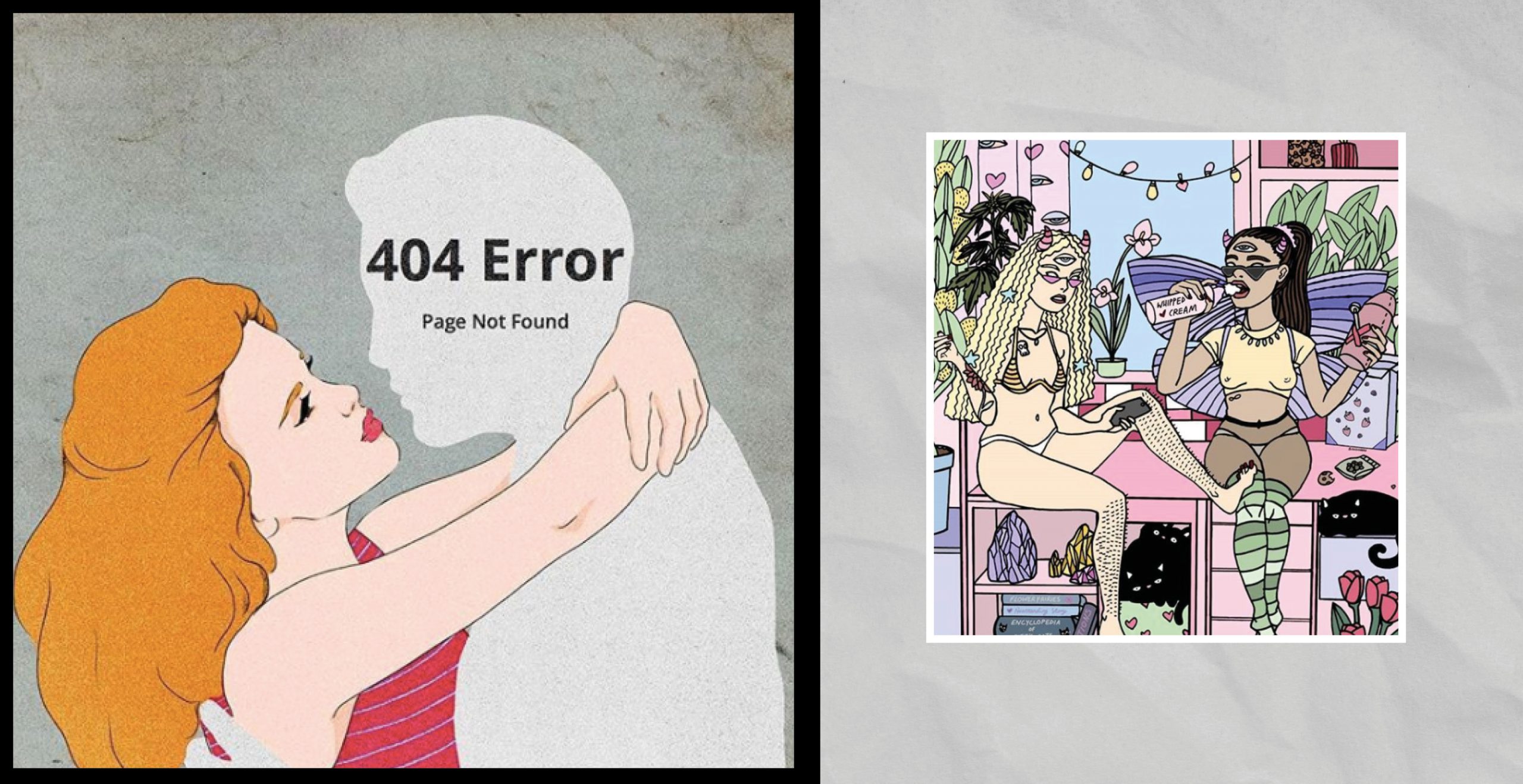Critical Dialogues: Ahmet Öğüt on Art and Its Role in Social Justice
Ahmet Öğüt is an artist whose work consistently challenges conventional narratives and confronts the intersections of art and politics. Growing up in a context marked by conflict and resilience, profoundly shaped Ahmet’s approach to art, with a deep understanding of the power dynamics that govern society. His work includes public interventions, institutional critique, and educational initiatives like “The Silent University”. Through the use of irony, recontextualization, and a commitment to social justice, Ahmet’s practice not only reflects the complexities of our time but also catalyzes dialogue and change. In this interview, Ahmet Öğüt shares insights into the evolution of his practice, the role of art in today’s polarized world, and the importance of creating work that resonates both locally and globally.
Personal and Artistic Background
L.L: Your journey as an artist began in Amed-Diyarbakır, a city with a layered history of conflict and resilience. How did growing up in this environment shape your worldview and, subsequently, your approach to art?
A.Ö: My hometown, Amed-Diyarbakır, is located on the banks of the Tigris River in Northern Mesopotamia. It is one of the oldest cities in the world and one of the largest Kurdish cities. Over its five-thousand-year history, it has been ruled by various polities including the Arameans, Assyrians, Urartu, Armenians, Achaemenid Persians, Medes, Seleucids, Parthians, and the Roman Republic. When I was growing up in Amed-Diyarbakır in the 90s, the civil war was part of daily life. We had a constant state of emergency declared by the government and there were often street curfews enforced at night when military tanks patrolled in the heart of town, accompanied by heavily armed Special Forces. Aside from what I witnessed on the streets, I clearly remember several political punishments from my childhood. In 1991 Leyla Zana, a newly elected MP in the Turkish parliament, took the formal oath of office in Turkish and added the Kurdish phrase. Three years later, in 1994, Zana lost her parliamentary immunity, was arrested, and put in jail for ten years along with three other Democracy Party MPs. In September 1992, the prominent Kurdish intellectual Musa Anter (Apê Musa) was assassinated. Being a journalist was dangerous, and listening to music in Kurdish was dangerous. I have often verbalized that growing up in a radically militarized environment with very limited resources taught me not to take anything for granted. I come from a place where I learned the importance of collective consciousness when one is isolated both culturally and politically. However, I also witnessed how simply making paintings could become a powerful tool to cross borders, bypass checkpoints, access higher education, and liberate oneself. This is why I continue to believe any form of art can have a transformative power to save and change someone’s life.
L.L: Can you share a bit about your early influences and what initially drew you to art? Were there specific experiences or cultural elements from your upbringing that you see as pivotal in forming your artistic identity?
A.Ö: I insisted on attending the newly opened Fine Art High School in my hometown. Art books were hard to find back then, so I created my art encyclopedia using cut-out images from pages collected from magazines and other general publications and added handwritten captions. At the time, I was unaware of the famous 1954 photograph of French publisher André Malraux examining the layout of the second book in his trilogy, Le Musée imaginaire de la sculpture mondiale (The Imaginary Museum of World Sculpture). In 2019, Goshka Macuga created a feminist version of that photograph (Exhibition M) at MOMA, which includes her intervention in my Angela Davis poster hanging on the wall. I was also unaware of Aby Warburg’s Bilderatlas, a series of 63 panels with black-felt backgrounds featuring 971 images, including photographic reproductions of artworks from Antiquity to the Renaissance, mixed with newspaper cuttings, advertisements, stamps, images of coins, and astrological charts. My self-made art encyclopedia intuitively was connected to these references which I discovered much later.
The first contemporary art exhibition I saw was in Ankara at the age of 19, titled “Genç Sanat” (Young Art) curated by Vasif Kortun. I was hugely inspired by that show, and I began creating my first performative, photographic, and video works the following year. Two years later Vasif Kortun invited me to exhibit at the second exhibition of Istanbul’s first contemporary art museum (former Project 4L). The show, inspired by the 1968 slogan, but in reverse was titled Pavement Under the Beach. I participated in the exhibition with a performance ironically named: “The Glory of the Author”, where I brought basic labor to the museum from everyday life, only for it to return anonymously to the streets.
Art and Politics
LL: The trajectory of your career shows a deepening engagement with political themes over time. Can you discuss how your understanding of the relationship between art and politics has evolved, and what factors have shaped this process? In an era where political discourse is increasingly polarized, how do you perceive the role of art in proposing meaningful dialogue? Do you see your work as a means of intervention in this discourse, and if so, how?
A.Ö: My artistic practice is driven by several enduring questions: where does the realm of an artwork, as well as the role of the artist, begin and end? I don’t believe in a specific gentrification of art as “political art” or “political artist”. Any kind of art practice is deeply connected to the realities of everyday life and socio-political ideologies. Responsibility is not only on the shoulders of a specific kind of artist or specific kind of art. As Nawal El Saadawi said; “When we live in a world that is very unjust, you have to be a dissident.” How to be a dissident effectively? Through my projects, I strive to instigate subtle shifts in perspective, employing the symptoms of these forces as catalysts for change and exploring ways to disrupt social protocols by making minor alterations to their fundamental structures. Over the years, my approach intentionally operated at the fringes of diverse fields and disciplines, fostering intersections and connections. As a result, my work has expanded beyond object-based artworks to encompass platforms, campaigns, debates, challenges, and surprises. At times, these endeavors demand structural change. When needed I have adapted my role as an initiator, interventionist, negotiator, or mediator.
L.L: Your projects often engage with politically charged issues in ways that resist simple narratives. How do you navigate the tension between art as a form of critique and the potential for it to be instrumentalized by the very systems it critiques?
A.Ö: It’s about asking the right questions to start with. For instance, why do Western mainstream media choose to focus on artists and cultural producers from certain countries only during moments of crisis? Wars and natural disasters often never end. The privileged, emotional experience of The White Savior Industrial Complex requires short-lasting, hyped moments upon which to focus its attention span. For that purpose, a jailed artist or an exiled artist can often become in demand – only with an expiry date. Unfortunately, many artists agree with such instrumentalization. It is natural to think that it is the only opportunity to be seen. But out there, some artists can see this danger and refuse to be instrumentalized in a hyped moment, choosing to remain in blind spots on the radar, to continue practicing under a never-ending state of emergency. That is where I actively prefer to stand. I have often said “No” or conditional “No” to many invitations based on this principle. Saying “No” might seem like a lost opportunity, but in fact, it can become a catalyst for long-term consistency, freedom, self-empowerment, and agency.
The Intersection of Irony and Critique
L.L: Your work often subverts expectations and challenges dominant narratives through irony and recontextualization. How do you see these strategies contributing to the political impact of your art?
A.Ö: Irony plays a significant role in subverting the dominant cultural and political narratives, exposing their inherent contradictions. And yes, recontextualization and reconstructing hold immense significance in my overall practice. One of my Mentors Bruce Ferguson, once said that I’m a serious enough artist who can take art both seriously and not seriously simultaneously. My humor comes from The Situationist’s routes. Like they did, I use irony to challenge and disrupt conventional social and cultural norms. I’m often very much interested in the situationist methods such as “dérives” (drifts) which are spontaneous interventions guided by instincts while drifting through urban spaces that break from everyday routines and norms, and “détournements” (detourned works) which a practice of taking existing works of art, advertisements, or other cultural artifacts and repurposing them in a way that changes their meaning and context to expose their underlying ideologies and reveal their absurdities.
L.L: While irony can make a critique more accessible or striking, it also risks being misinterpreted or diluted. How do you ensure that the critical nature of your work remains clear and impactful, even when employing subtle or indirect approaches?
A.Ö: Irony comes in many shades, and I’m not interested in the cynical, satirical, or mocking kinds. I’m drawn to a form of humor that doesn’t arise from a sense of superiority over others but instead offers psychological relief through playful and provocative acts that carry emancipatory and transformative power. I ensure that my work is grounded in clear ethical principles, with contextual anchoring being crucial. Exposing through irony is only the first step—each idea carries the real potential for people to take it further, activating it as a tool in their own lives.
Public Space Interventions
L.L: Your public interventions often transform everyday spaces into sites of political reflection and action. What challenges have you faced in working within public spaces, particularly when confronting systems of power, and how do you navigate these challenges to preserve the integrity of your work?
A.Ö: The concept of public space varies significantly depending on the geographic and cultural context. In Turkey, for example, the definition and use of public space are shaped by factors such as state control, social norms, and political expression. Sociologist Şerif Mardin coined the term “mahalle baskısı”—meaning “community pressure” or “peer pressure”—to describe how neighborhoods often police themselves. With the global rise of right-wing forces, this kind of pressure can be observed in many places dominated by conservatism and patriarchy. How can we generalize the definition of public space when we’re dealing with areas marked by buffer zones or red zones? Perhaps it’s time we reconsider this. Public spaces are increasingly governed by health and safety regulations, which sometimes make it more practical to carry out interventions without seeking permission. Yet, there are also times when a story can be effectively told through a playful approach that adheres to these regulations. The public nature of your work invites a diverse range of responses, sometimes from those who may not be typical art audiences. How do you think the context of public space alters the reception and impact of politically engaged art compared to more traditional gallery settings?
Education and Community Engagement
L.L: The Silent University is a significant part of your work. Can you explain how the initiative originated and what you hoped to achieve with it? What impact has it had on the participants involved and the broader community?
A.Ö: More than 10 years ago, in 2012, I launched The Silent University—an inclusive platform for knowledge exchange based on solidarity. This initiative enables individuals with academic backgrounds who are forced migrants and displaced people to deliver lectures and courses. Each branch of The Silent University operates through self-management and collaboration with local institutions in various locations, including London, Istanbul, Stockholm, Hamburg, Mülheim, Athens, Amman, and Upstate New York. As the initiator, my responsibility lies in facilitating the development of each branch and maintaining ongoing connections among them. Besides the immediate academic recognition, members of Silent University have been getting easier visas, permits, and even citizenship.
L.L: Your involvement in education is a relevant aspect of your practice. How does this involvement shape and influence your artistic work? Specifically, how do projects like “The Silent University” reflect and integrate your educational pursuits?
A.Ö: My engagement with rethinking education began long before I initiated The Silent University. Over the years, I’ve served as a guest tutor, mentor, professor, and research teacher at various institutions, including the Sandberg Institute (Amsterdam), Skowhegan School of Painting & Sculpture (Maine, USA), Finnish Academy of Fine Arts (Helsinki), Dutch Art Institute (Arnhem), and Yıldız Teknik University’s Art and Design Faculty (Istanbul). Currently, I continue my work as an advisor at the Jan van Eyck Academie in Maastricht.
However, my experience with The Silent University has clarified my understanding of radical pedagogy. Radical pedagogy extends beyond typical grading practices and cultivates conversations that reach beyond the classroom. It rejects the hierarchical “banking model” of education—a term coined by Paulo Freire in Pedagogy of the Oppressed—and recognizes the power of students as active participants. In this approach, theory is always intertwined with activism. Another crucial lesson I’ve learned is that artistic pedagogical practices must be freed from commonly used terminologies like “projects” and “workshops,” which suggest temporary engagements. True pedagogic practices require long-term commitment, engagement, and determination, not short-term interventions.
Global Contexts: Migration, Labor, State Violence
L.L: Given the global nature of many of the issues you address, such as migration, labor, and state violence, how do you approach the challenge of creating work that resonates with local contexts while also engaging with broader global concerns?
A.Ö: My approach to the local context is rooted in a deep respect for the unique social, cultural, and political dynamics of each place where I work. I often seek advice from local artists and activists, friends, and community members to ensure that the work is grounded in the realities of the place. This collaborative approach helps to create work that resonates with the local audience and addresses their specific concerns. It’s important to me that my work is not only relevant but also respectful of the people and cultures it engages with. My projects are often site-specific, meaning they are tailored to the particularities of the place where they are situated. This requires a flexible approach, adapting my methods and ideas to fit the local context rather than applying a one-size-fits-all model. But it’s also important the work remains globally relevant outside of a specific site.
L.L: As we face increasingly complex global challenges, do you believe that political art can effect real change, or do you see it more as a reflective practice that highlights and critiques rather than directly intervenes?
A.Ö: I do believe it, certainly, with no doubt. Last year Anna Levett wrote an incredibly touching article for The Los Angeles Review of Books on the revolutionary potential of art. Levett writes about El-Fattah’s arrest in 2019 in Egypt, asking the question: Why did the Egyptian authorities deny El-Fattah an MP3 player for so long? Levett says Music enlivens El-Fattah—not because it would cheer him up, but because it would endow him with life. They don’t want to kill him; which could turn him into a martyr, which is the most scary for the government but they want him barely alive. Levett then speaks about my work Bakunin’s Barricade, ending her article with these words; “I imagine what might happen if the conditions attached to Bakunin’s Barricade should come to pass; carrying the art out of the museum and onto the pavement. Were this to occur, I realize, the works of art would not be for the authorities. Their purpose would not be to protect us from the violence of the state, nor to shame the state into stopping its advance. They would be for us, the protesters. I would want to stand beside Kiki Smith’s sculpture—not so it could shield me, but so it could remind me of the stakes of the fight.”
I first installed “Bakunin’s Barricade” in 2015 at Van Abbemuseum. It was important to demonstrate that original artworks from the museum’s collection, some with astronomical insurance value, could be included in the barricade installation. Five years later, Stedelijk Museum Amsterdam became the first to sign the contract, Grounded in the Universal Declaration of Human Rights, ensuring the work could be loaned to the public and the streets if requested during future mass protests or wartime. This shifted the work from a proposal to a functional piece with real potential to be loaned back to the streets. Unfortunately, the Stedelijk Museum did not agree to loan the work upon every request of a group of cultural workers, artists, and activists. The code of ethics for every museum must represent not only the responsibility to protect cultural heritage but also accountability to the public, to remain relevant and aligned with justice.
A Look Into The Future
L.L: Looking to the future, are there particular political or social themes that you feel are becoming increasingly urgent for artists to address? How do you see your practice evolving in response to these emerging issues?
A.Ö: We need a distinct difference between acceleration and an impulsive but prepared set of actions. Many of my artworks were born from the urgency and need at a particular moment. Most of the time, these urgencies persist, so artworks need to function and operate in a long-term manner. This long-term engagement often leads to tangible achievements. Otherwise, it’s another fleeting concept based on trends or mainstream media topics that merely serve as temporary sensations. The issues that arise usually have roots in enduring systemic abuses of power, infrastructural issues, and ignorance. It is imperative to direct attention toward those topics even when they aren’t within the public domain—at times when the issues persist but remain unnoticed.
There are lots of taboos in the art world. It can get conservative and regressive when it comes to labor rights. Artists often shroud themselves in secrecy, avoiding disclosing their artwork prices and wages even amongst one another. This self-restraint takes root even before the involvement of institutions or external factors. Artists frequently hesitate to assert the compensation they rightfully deserve. Institutions often seem to believe that they are entitled to claim the surplus yielded by artists, collectives, and independent spaces. The concern isn’t solely centered around monetary aspects; it extends to how we deal with the added value of culture and heritage. These aspects often tend to be treated as insignificant. Most of the ‘value’ of art comes from this surplus. The notion of assigning a price tag to many artworks becomes almost illogical; their value is astronomical, not due to the immense added value but rather the speculative and nontransparent nature of it. Artists’ agency plays a pivotal role in transmuting this into a more horizontal process. The storytelling needs to change, as does how we attribute common cultural values without creating geography, race, gender, and class hierarchies.








